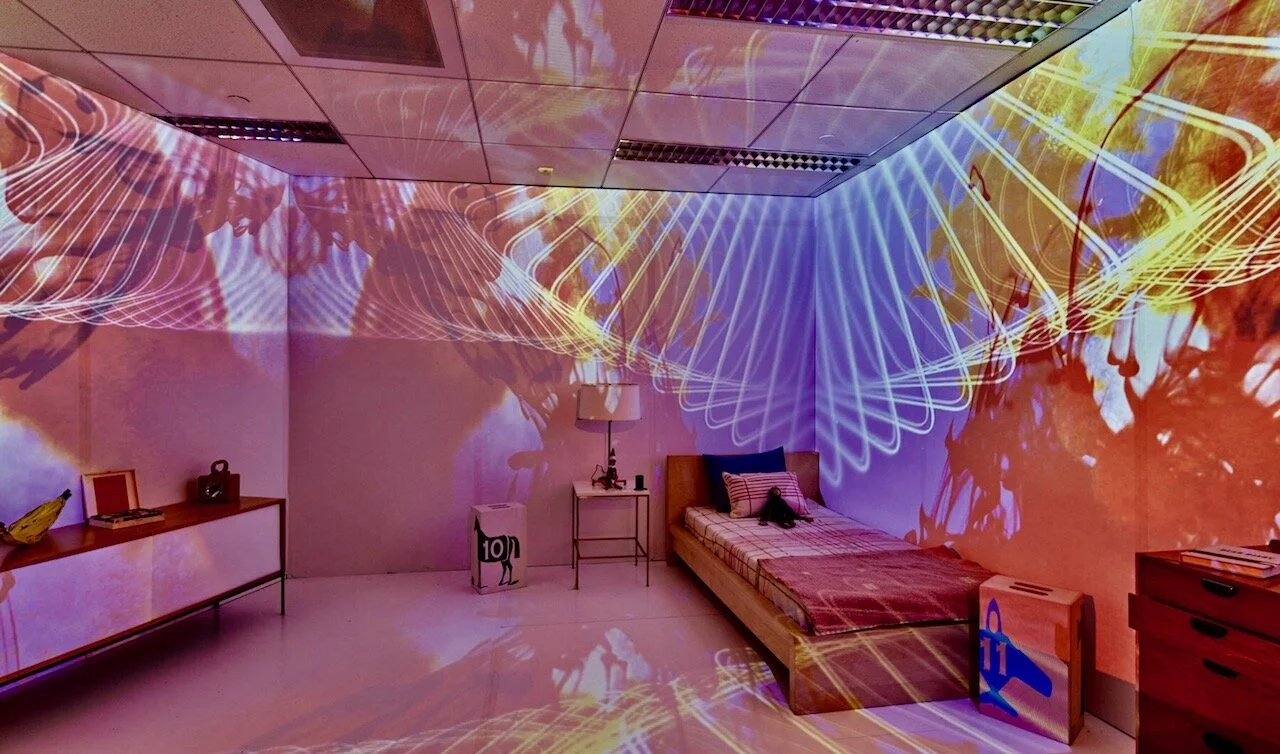Safe havens
In this time of social distancing and quarantines we are more in our homes than we have been. Our homes are our safe havens, our comfortable shells. Minimalism now feels cold and distant, we need our homes to be warm and healing. After Covid19, in a changed world, human warmth and comfort will be important and defining design of spaces and objects.
Surroundings have a high impact on us, human beings, a positive environment enhances someone's state of mind, but a negative space may harm someone's happiness. Well-being is important for people and societies, enhanced subjective well-being has been shown to lead to better life outcomes, such as better health status, better social contact and increased educational accomplishments. The development of a society can be influenced by the well-being of the people within that society. So in a world where people feel a lot of pressure and stress, how to use space in order to improve the mental state?
Self on the Shelf Immersive Interactive Installation by Laia Cabrera and Isabelle Duverger
WHAT moves us?
Beauty is about awakening all the senses by combining the different elements of sound, light, colour and texture. According to master students of the Psychology of the Arts, Neuroaesthetics and Creativity, two brain regions, the medial orbitofrontal cortex (mOFC) and the ventromedial prefrontal cortex (vmPFC), have been associated with the experience of various dimensions of beauty. The same brain regions are activated when experiencing pleasure whilst doing drugs or eating a favourite meal. By using Mobile Brain-Body Imaging (MoBI) we can measure what moves us.
LIGHT and dark
People need regular exposure to light and dark each day, human well-being is dependent on natural daylight. Research shows that windowless spaces create monotonous conditions that may be stressful. Moods change day by day. Next to the incoming daylight of the windows, a view of the outdoors is also a contributor to well-being, especially when the view is a nature scene.
Approach to future living, architect Asif Khan
LOOKING AT NATURE
Just looking at plants is known to lower stress, which decreases damaging cortisol in our blood. Research has shown that forest views from windows even affect job satisfaction and stress in a positive way. Natural settings offer distractions, directed attention and novelty, which are associated with restoration. To implement nature and biophilic elements into design and materials can be helpful. Implementing wood, bamboo and natural fibres has the ability to give spaces a natural and calming feeling.
Water
Next to the popularity of green spaces, the benefits of “blue space” help people to feel well, water has a psychologically restorative effect on the human being. People receive a positive mood after visiting aquatic environments. Large bodies of water work best, but any water has the ability to feel the positive influence of these environments. Spending time in and around water can improve our mood and reduce stress, especially when we experience the ebb and flow of the tides, these patterns of life can put life in perspective.
LIFE hamburg by LAVA Architects
CURVED SHAPES
Also the shape of a space or product affects someone’s state of mind. Since round shapes are often seen back in nature, it seems very logical that people experience round shapes as pleasant. Research shows that organic shapes have the ability to affect someone’s mood positively. People are more likely to judge spaces as beautiful if they are curvilinear than rectilinear. Implementing these organic shapes into furniture, architecture or products may have a beneficial impact on the human brain.
COLOUR use
Colours can have an impact on our mood and how we perceive the world. People have their own preferences when it comes to colour. Warm colours have the ability to help performance in physical situations, while cool colours tend to help performance on cognitive tasks. But most important is to focus on how we feel while perceiving certain colours. When designing a space, think about the people who visit the place most often. It is important to communicate with them and to keep the situation and their wellbeing in mind.
Quarter car interior by Seymourpowell
SOCIAL INTERACTION and inclusivity
Love and belonging are one of the basic needs of a person. Someone’s wellbeing is dependent on social interaction. Architects are becoming aware of this and try to stimulate social connections. Think about round set-ups at meeting places that allow open, face-to-face orientations with colleagues.
Combining science with design to create spaces which have the ability to influence human well-being positively offers inspiring opportunities. Working in such spaces helps to be more creative, living in such spaces helps to feel well. Beauty is, in part, experienced subjectively, but we see similarities in opinions. These opinions also depend on the situation: we have to consider the people, the place, the culture and the moment.
Banner image, Black Power Naps/Siestas Negras by Navild Acosta and Fannie Sosa





